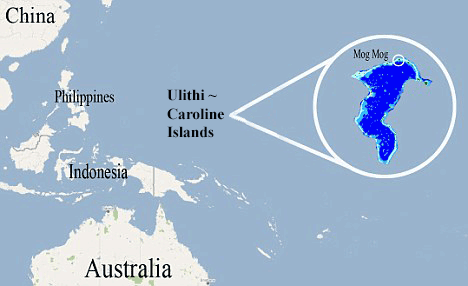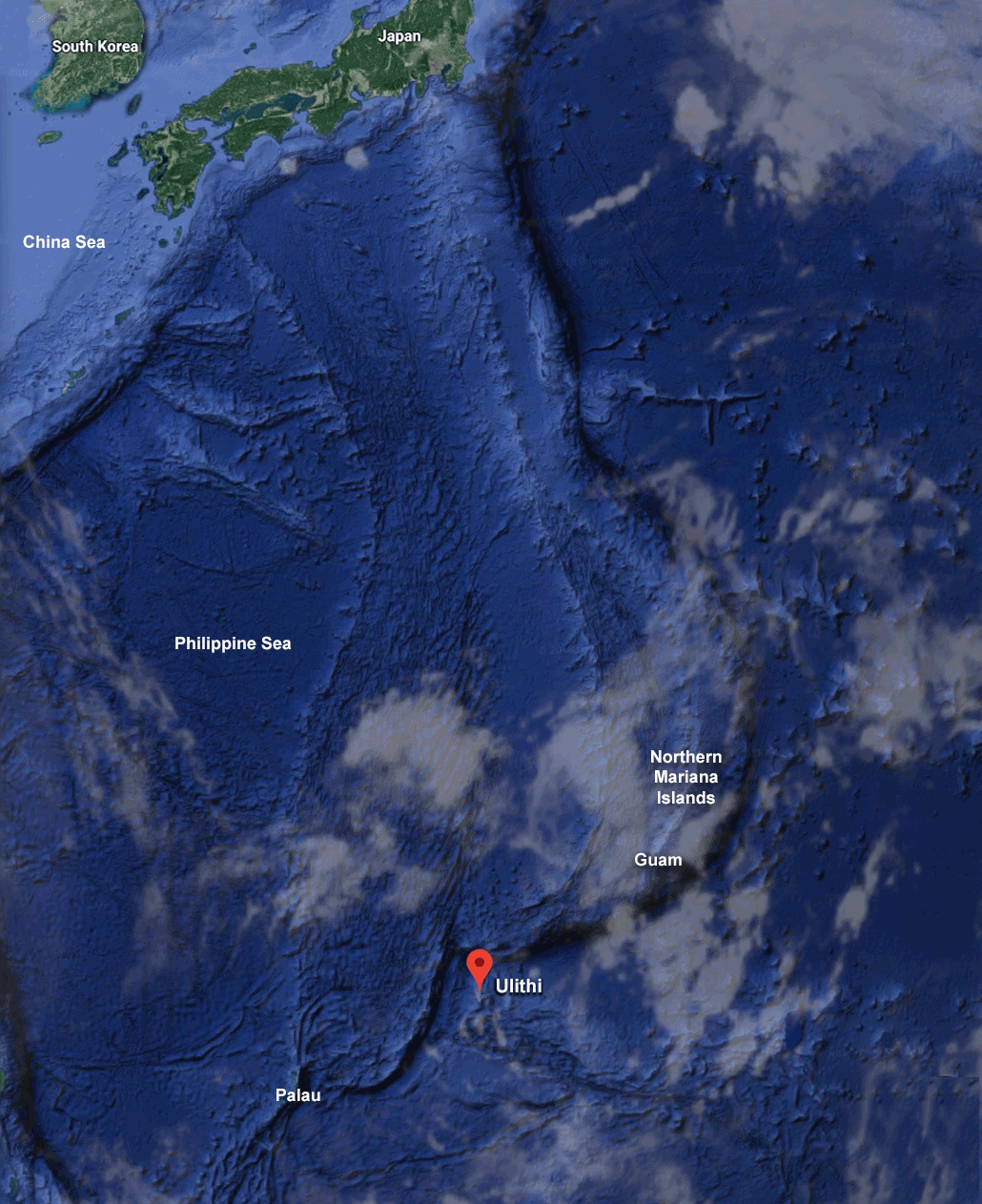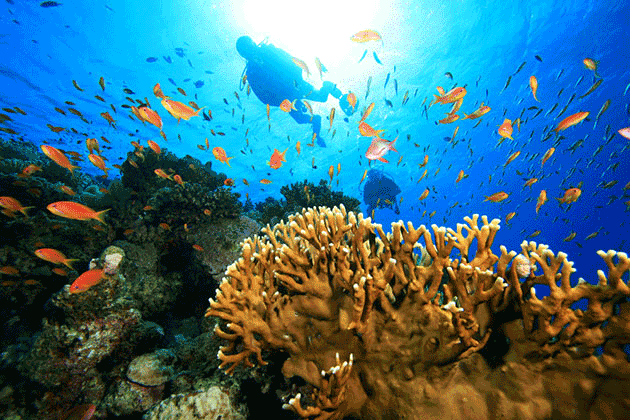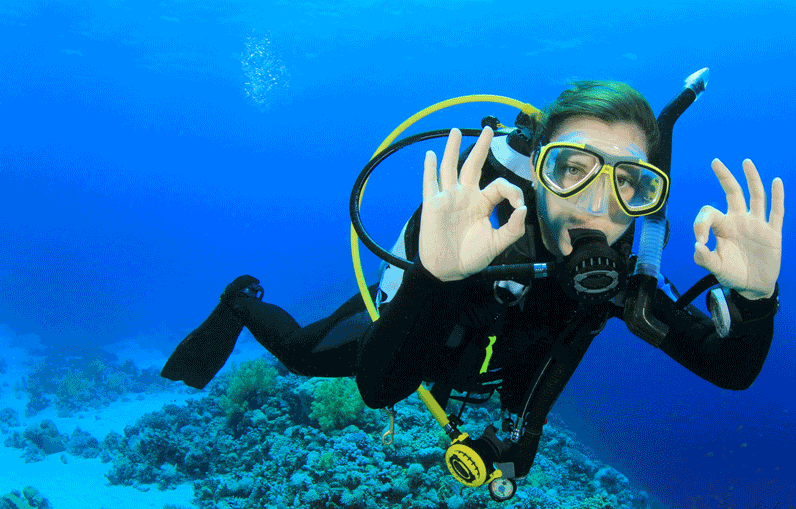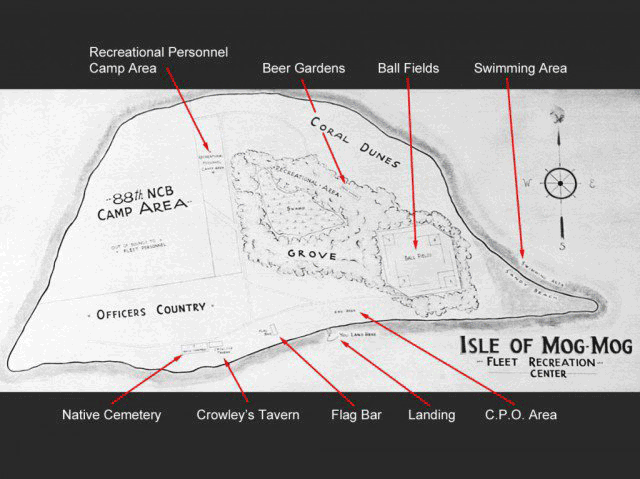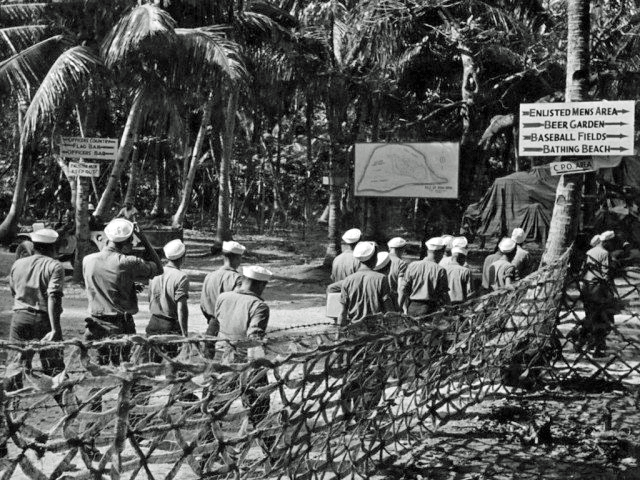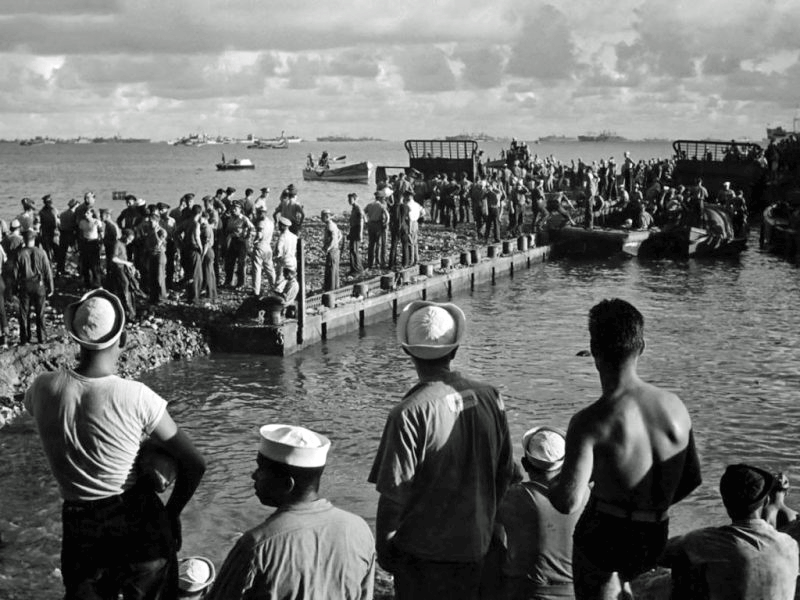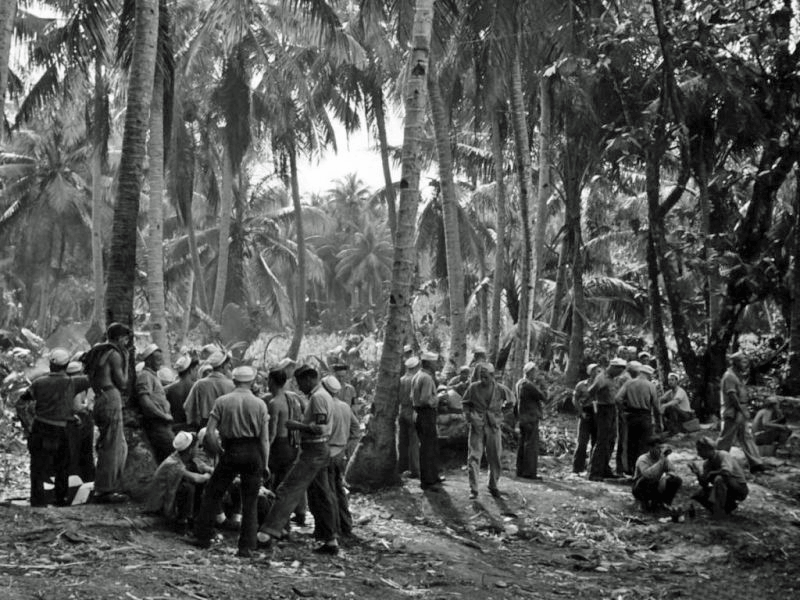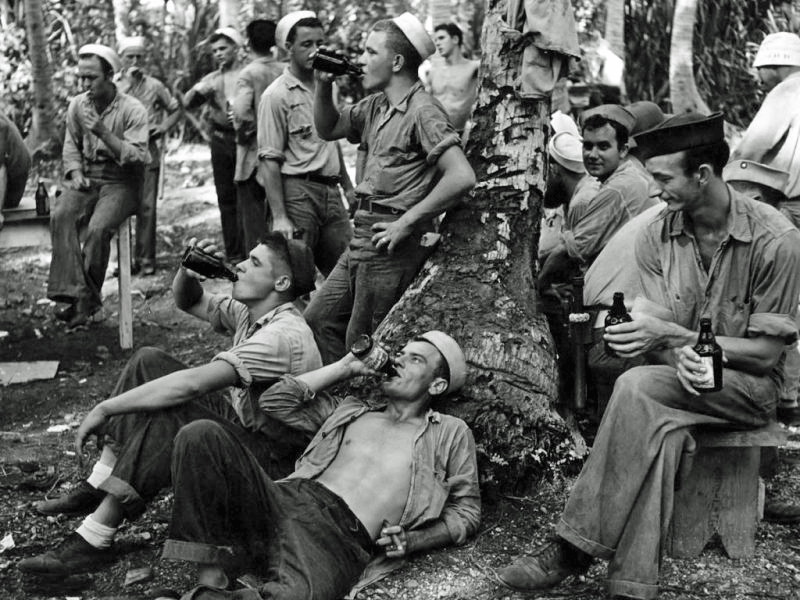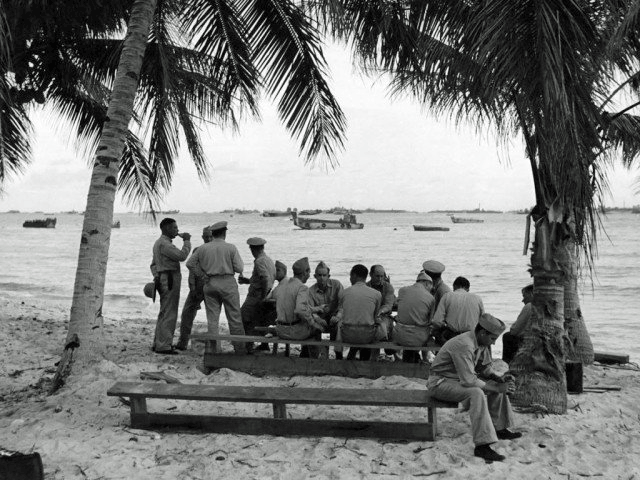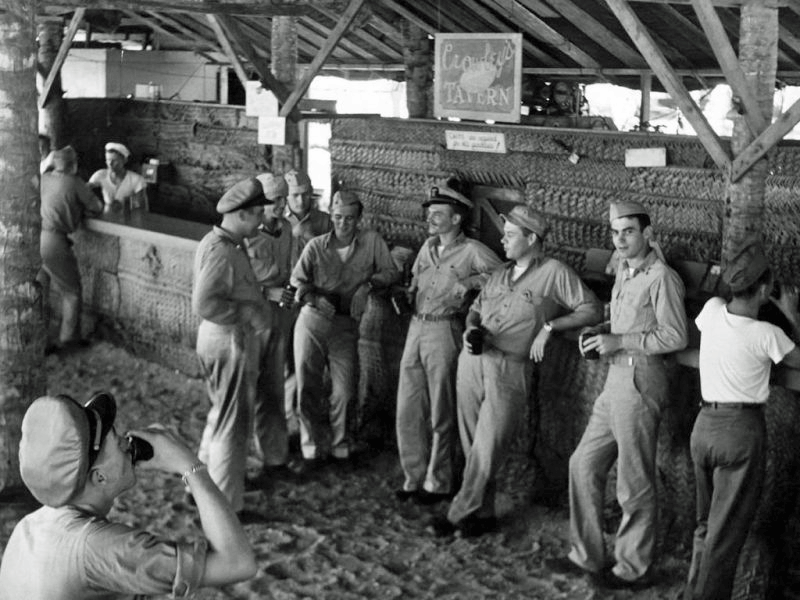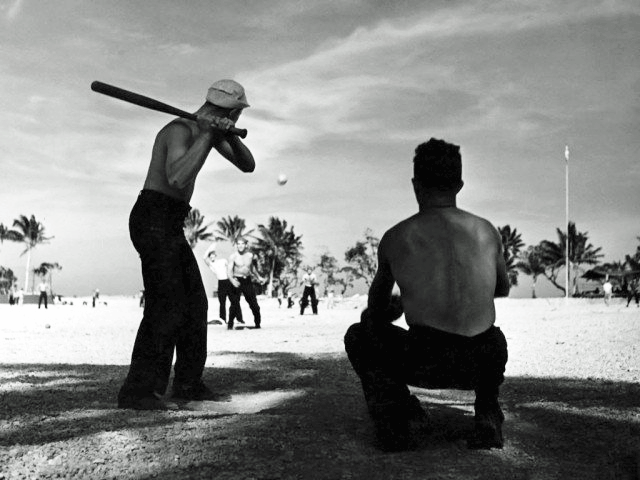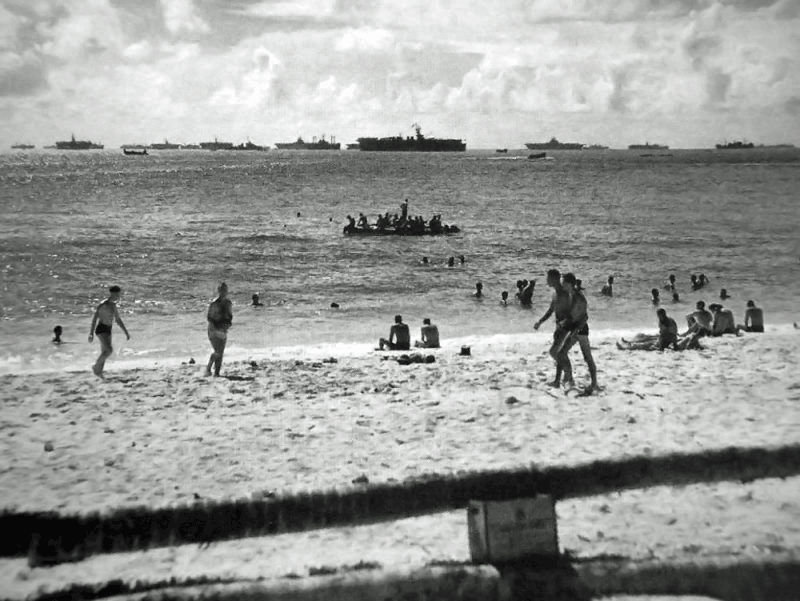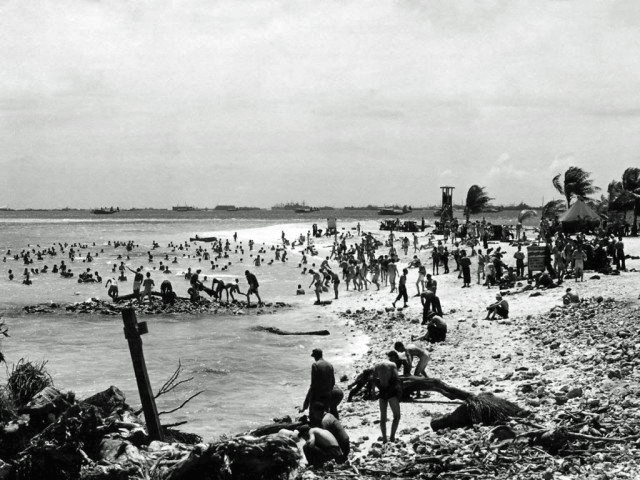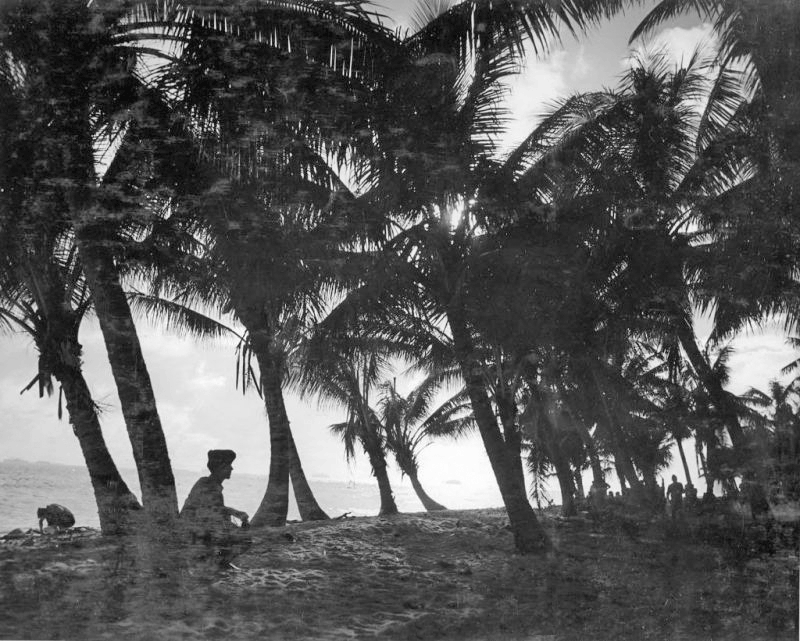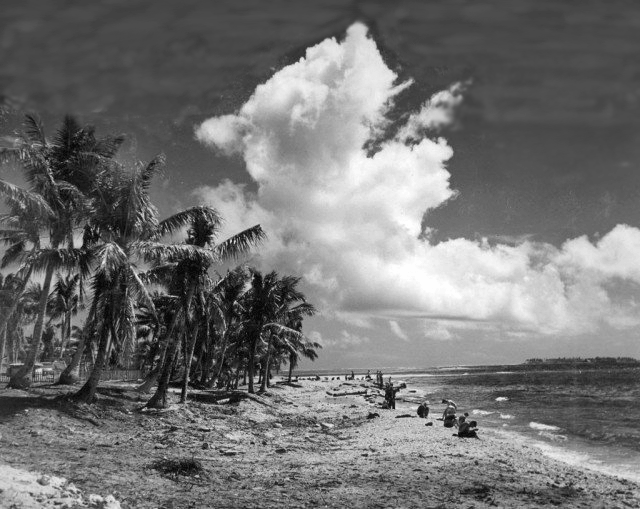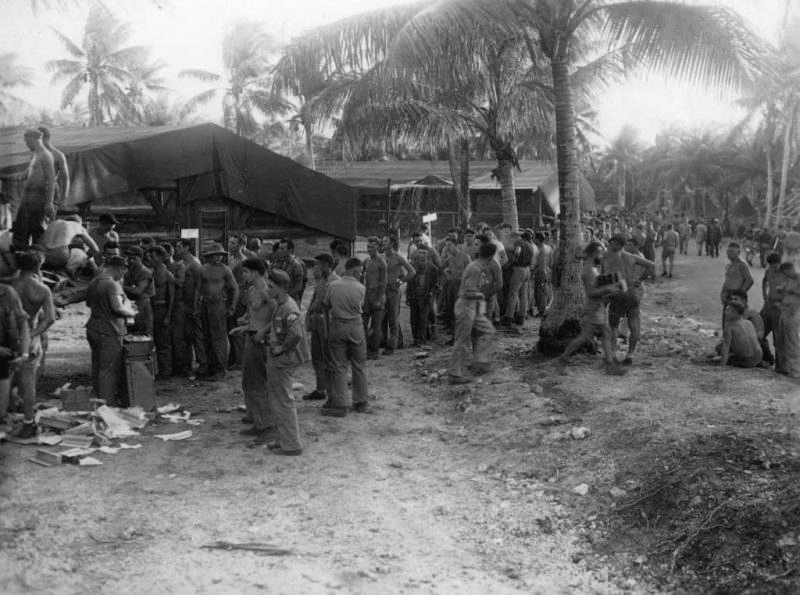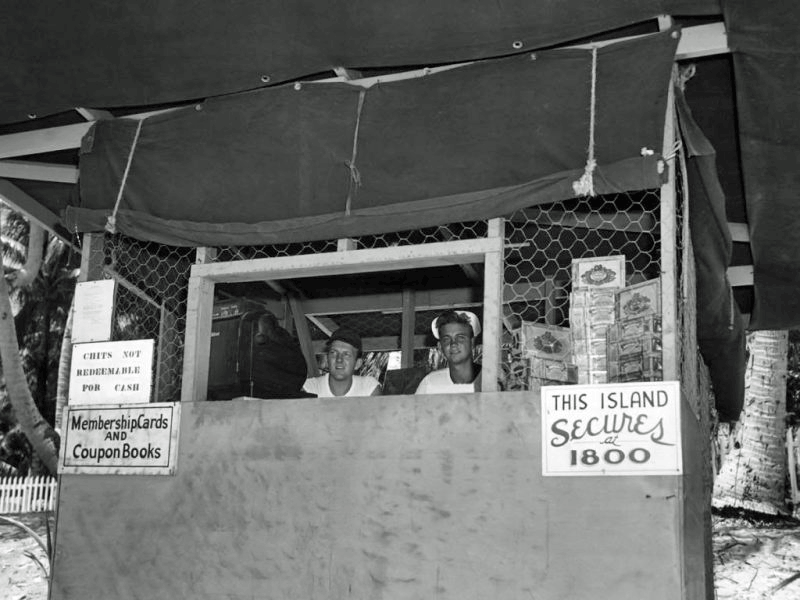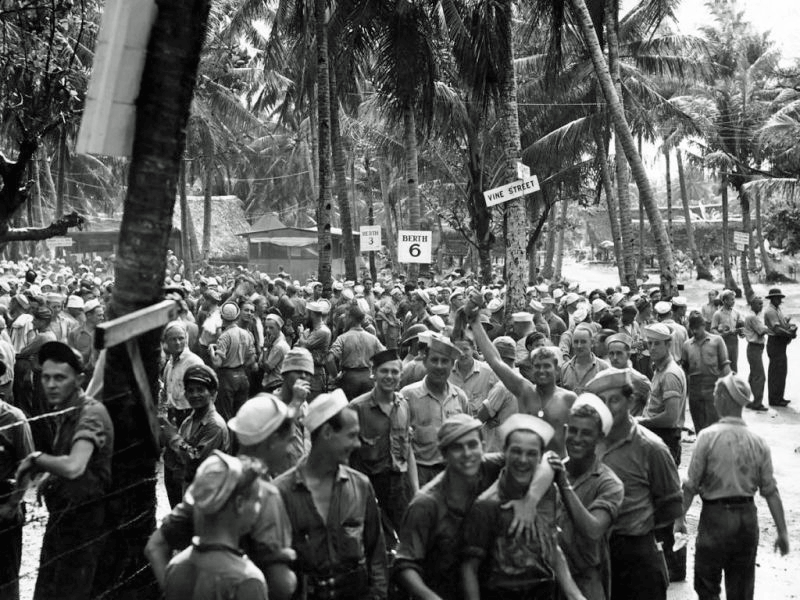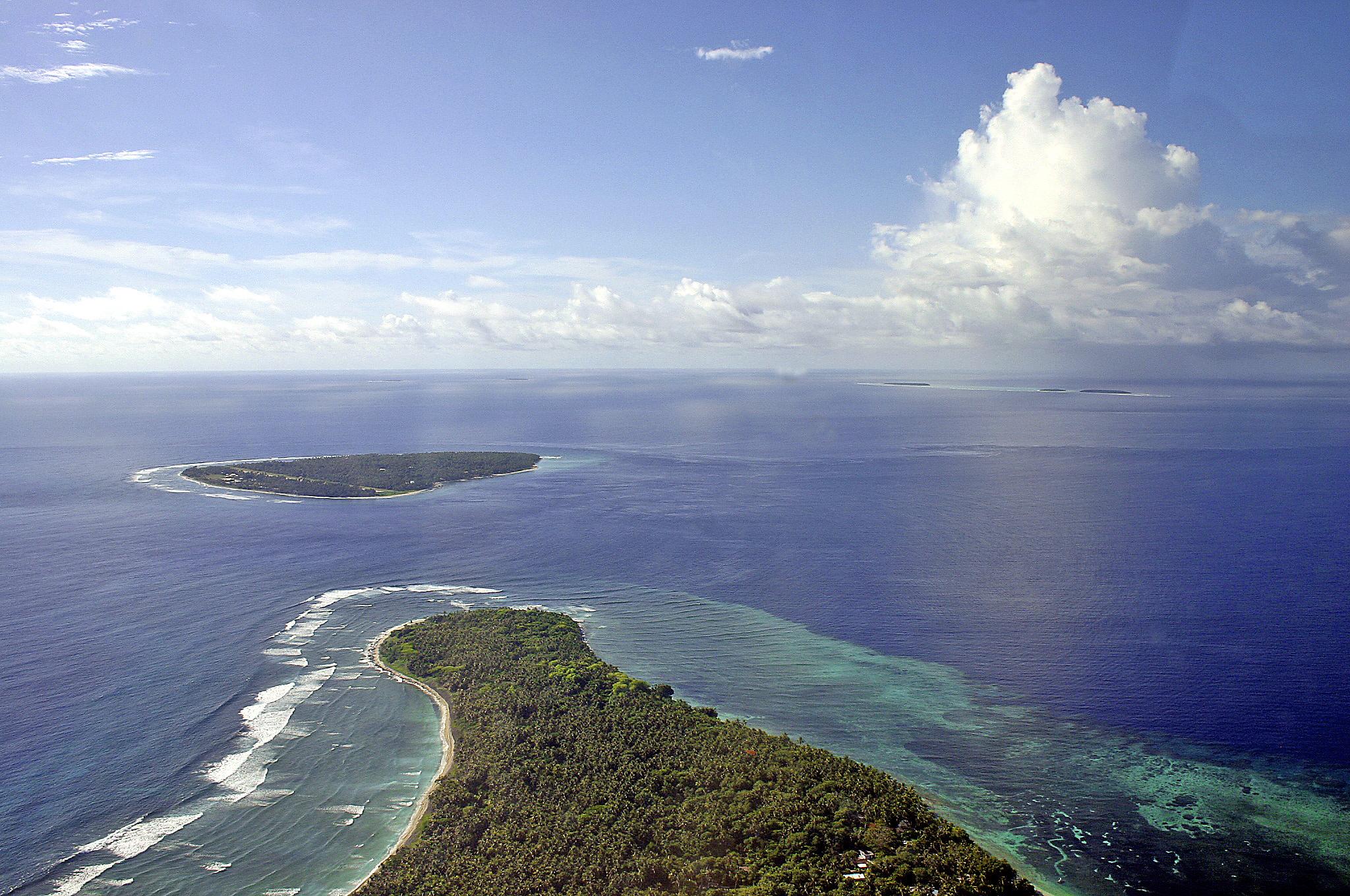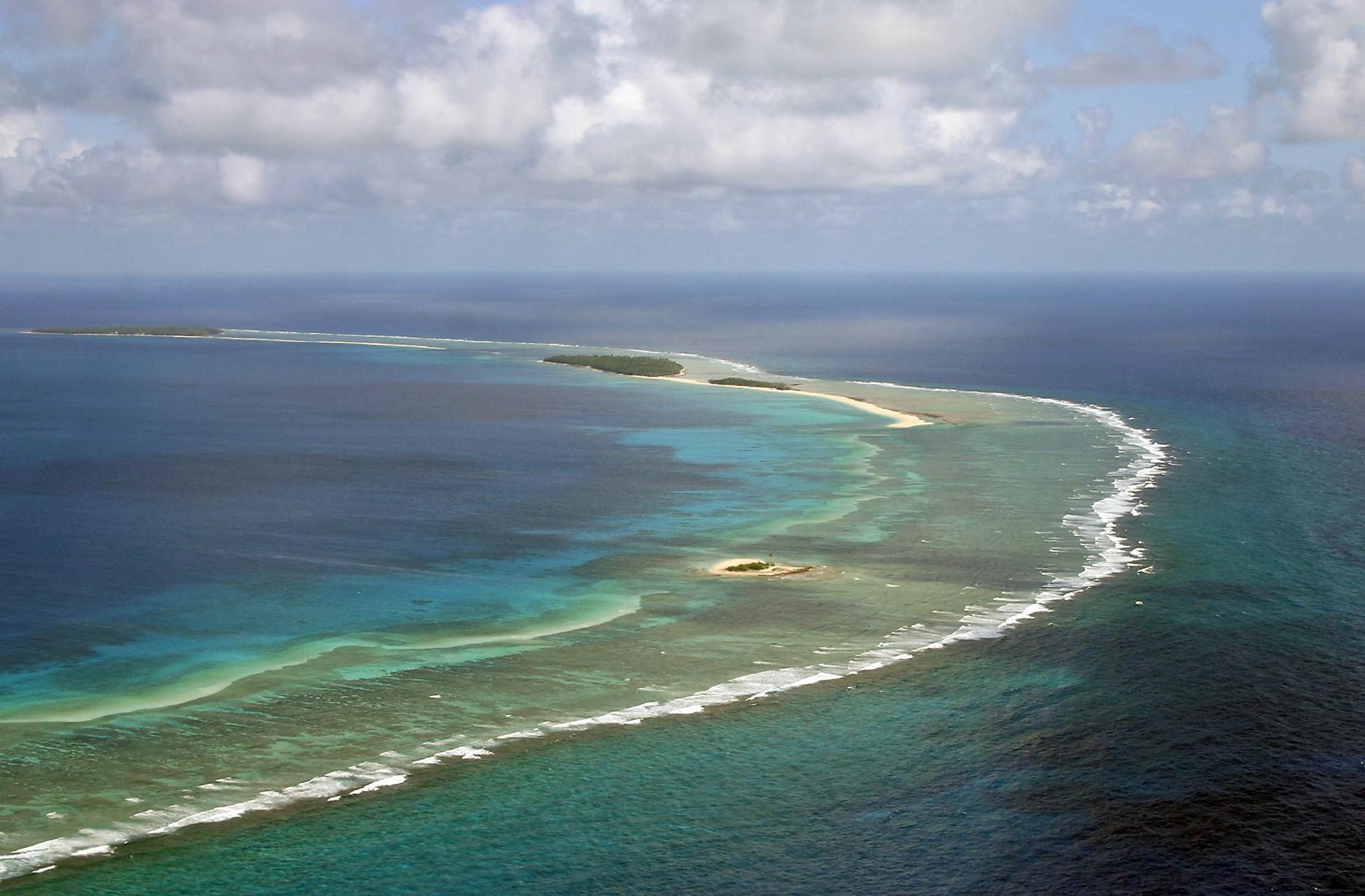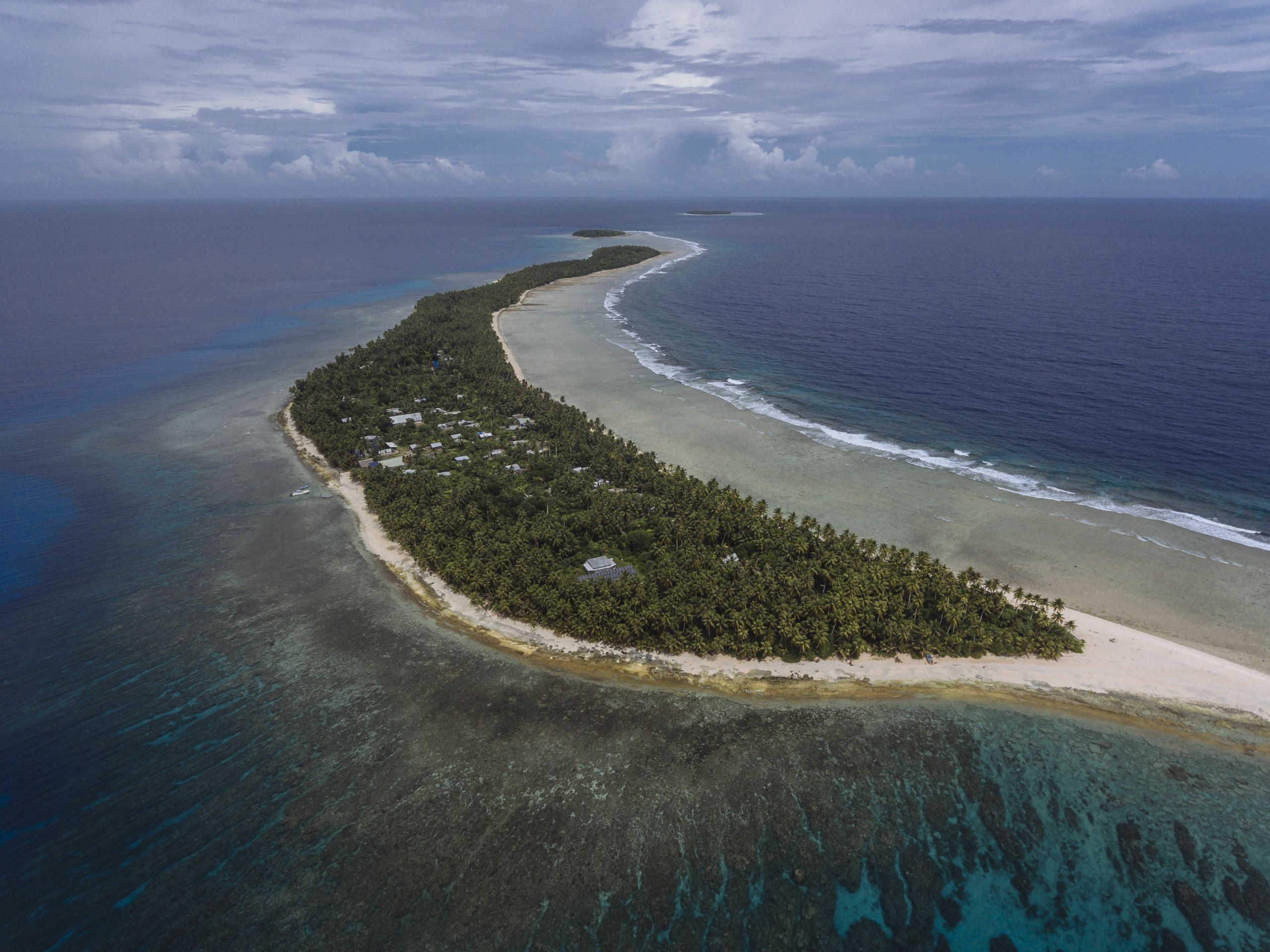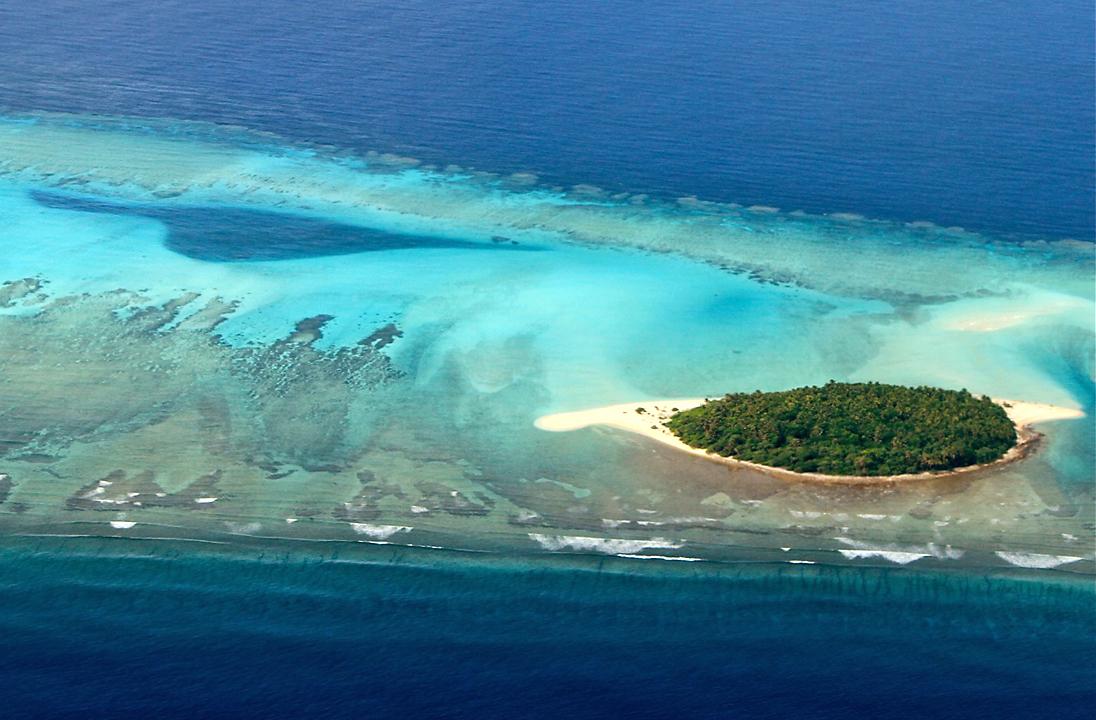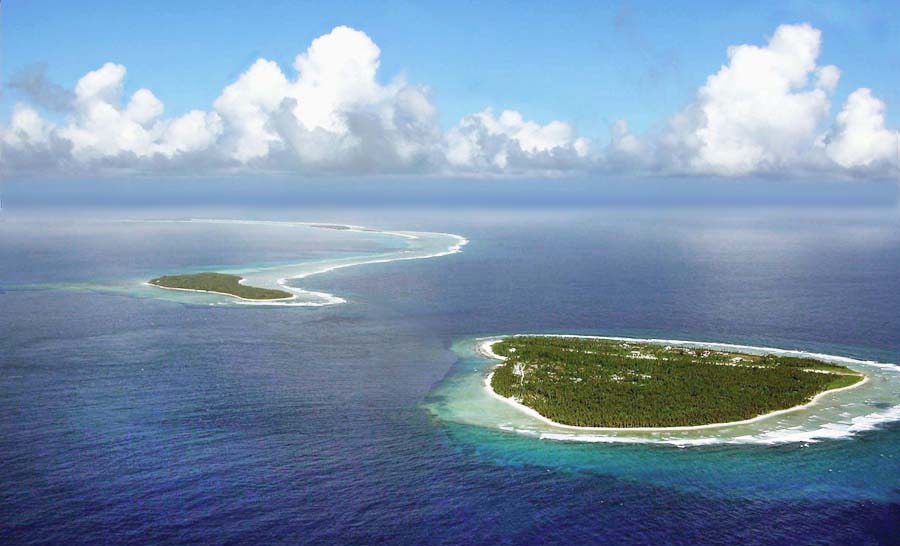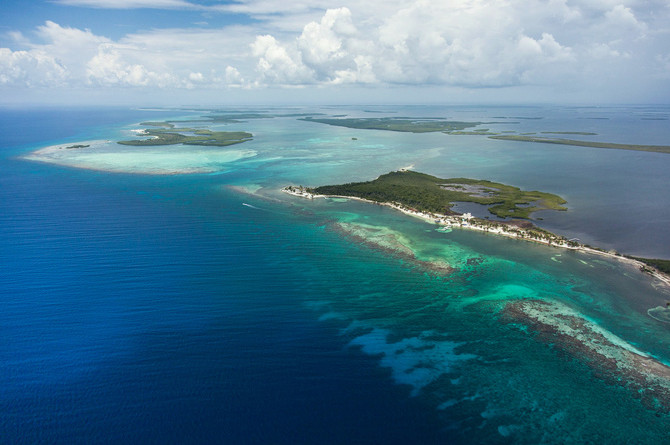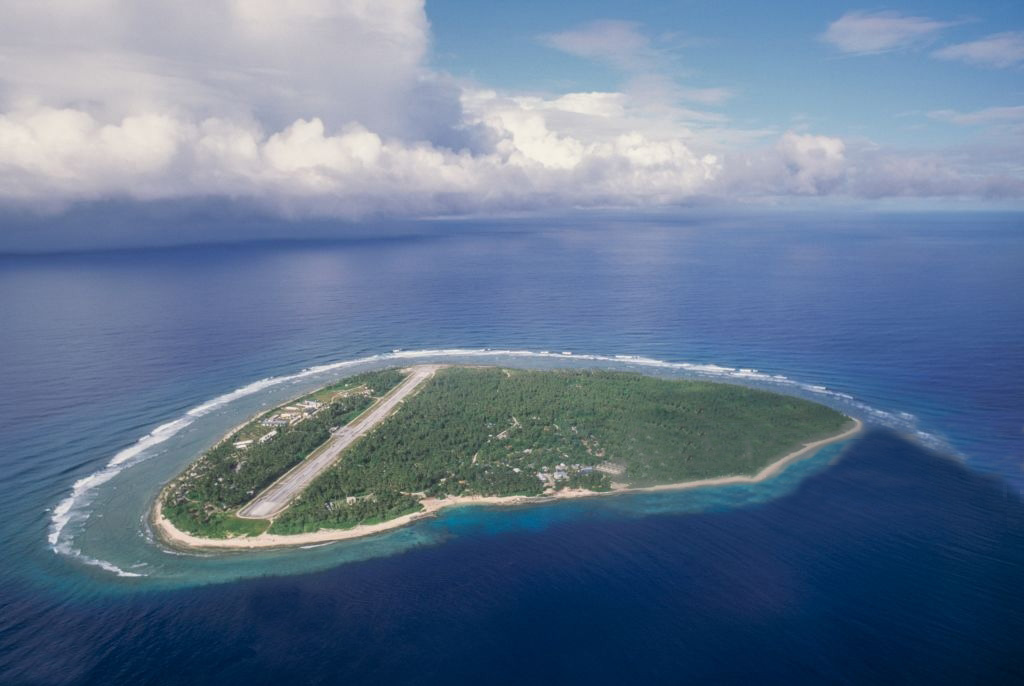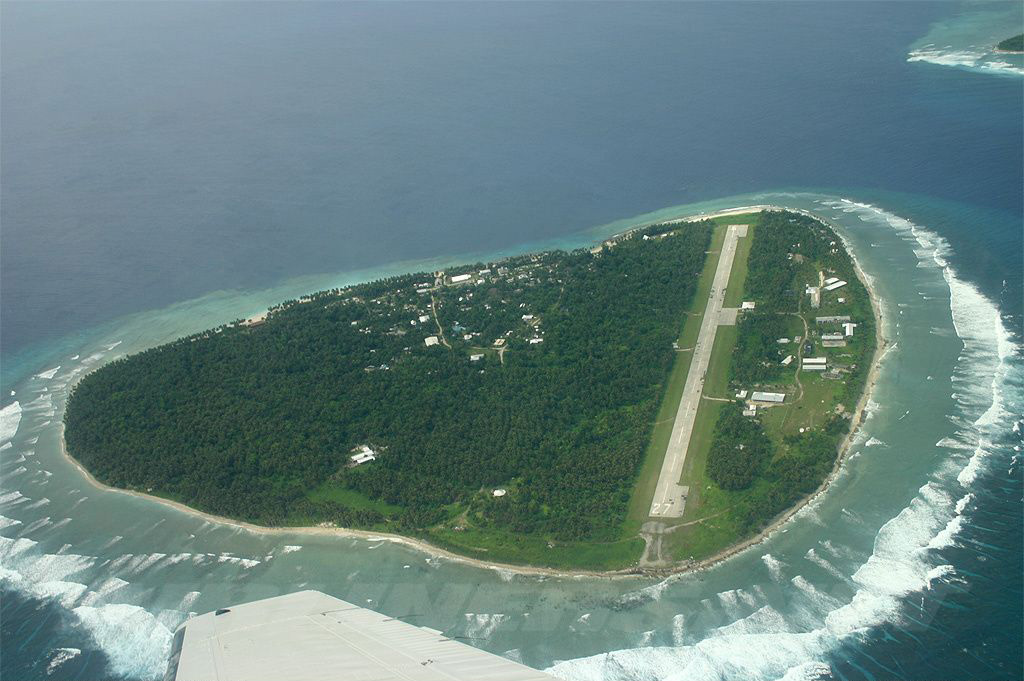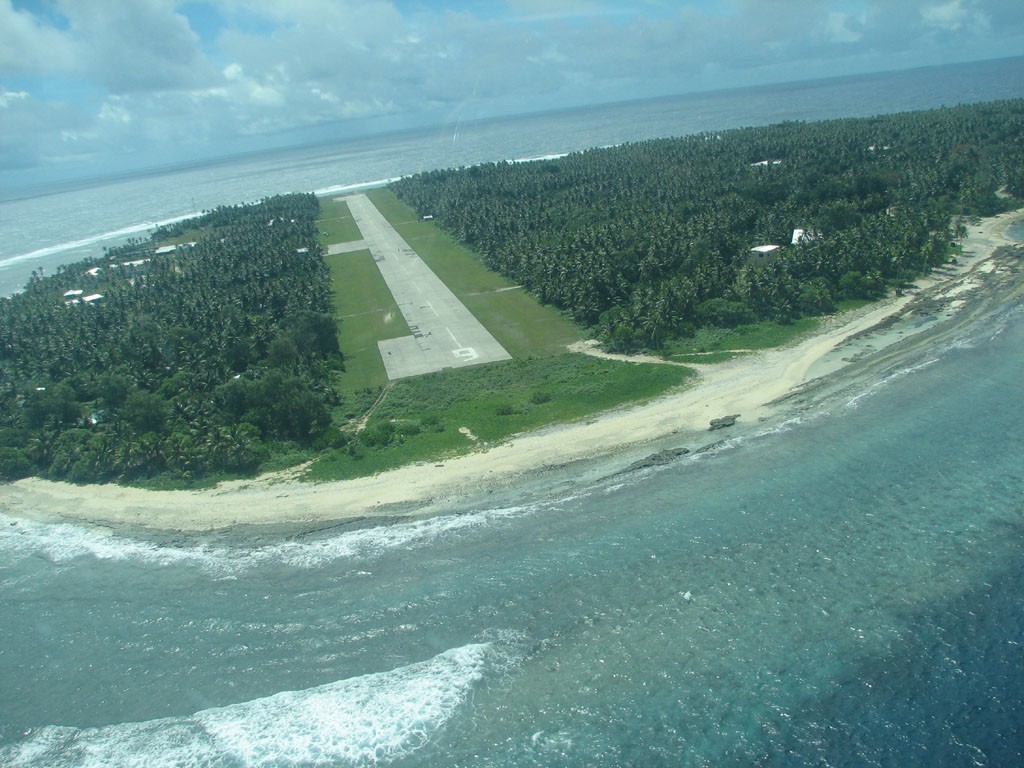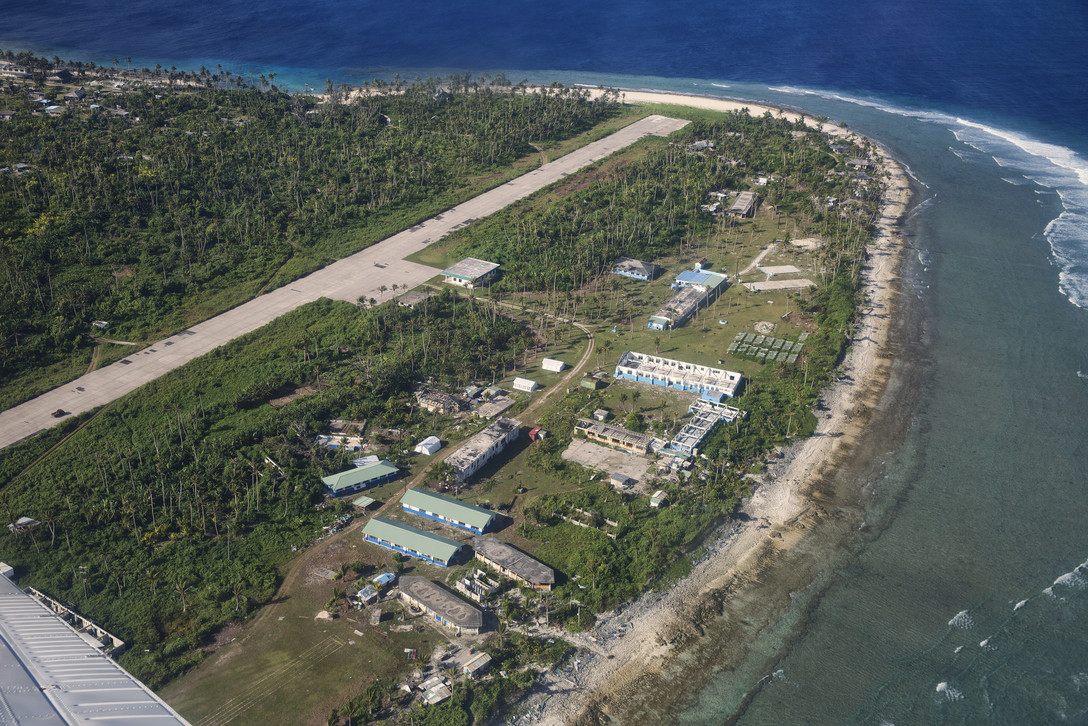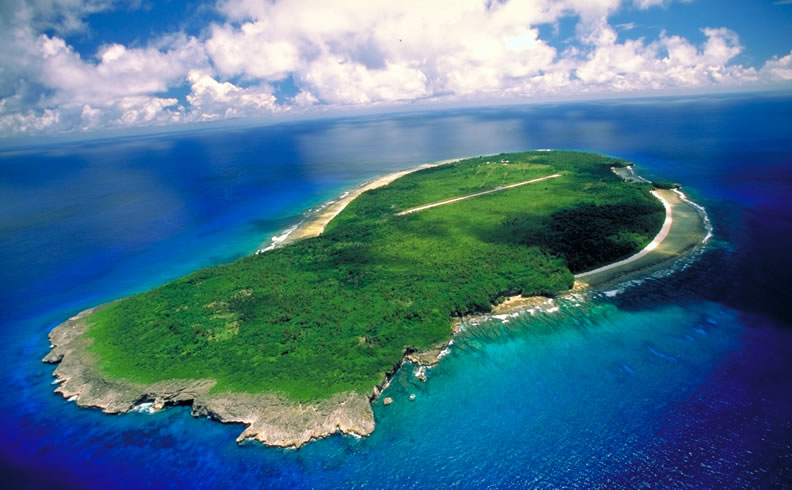

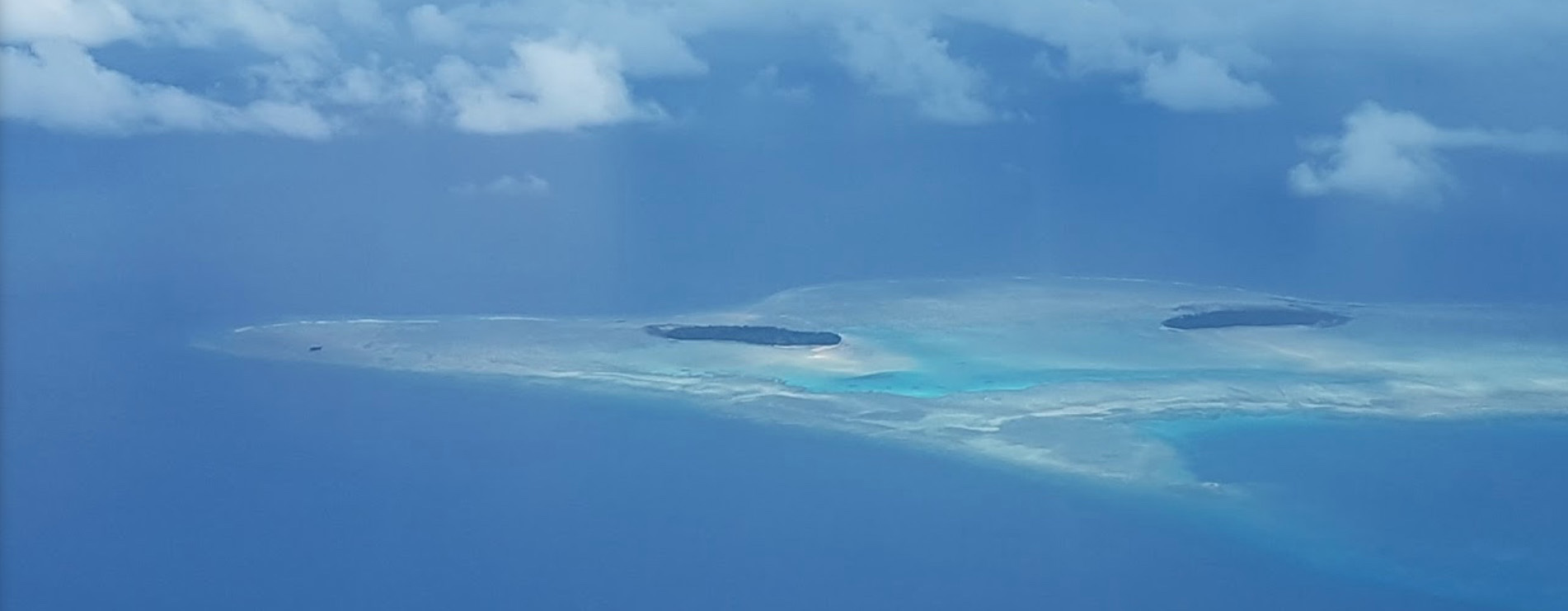

Ulithi – Top Secret: The US Naval Base at Ulithi Atoll Was Once the World’s Largest Naval Facility
On 22 September 1944, a regimental combat team from the Army’s 81st Infantry Division took a giant step on the road toward the Japanese homeland, at no cost whatsoever. The soldiers went ashore at Ulithi atoll. Through his constant study of maps, Admiral Nimitz discovered this atoll and readily saw its value. He called it the U.S. Navy’s secret weapon, and his censors made sure that no reporter made mention of it. But the Japanese knew Ulithi was there, as it was only 90 miles distant from Japan's base on the nearby island of Yap, which the American had bypassed.
Ulithi, located in the West Caroline Islands, is 1,300 miles south of Japan, specifically Tokyo, 850 miles east of the Philippines, and 360 miles southwest of Guam. It is a classic Pacific atoll with coral reef, palm trees, and white sand. It had depths ranging 80 to 100 feet; suitable depths for anchoring the huge naval ships. It was the only fitting haven for 800 miles where the US Navy could anchor its ships. The coral reef is approximately 20 miles long and 10 miles wide, and there are over 30 little islands rising slightly above sea level, the largest only half a square mile in area.
When the US Navy landed in Ulithi in September, 1944, it found 400 natives and three enemy soldiers residing there. The natives, who were settled on four larger islands, Sorlen, Falalop, Asor, and Mogmog, were all moved to a smaller island, Fassarai.
A 3,500-foot airstrip was built at Falalop; it was just barely wide enough to handle Douglas C-47 Skytrains and the R5C (C46) Commandos that would arrive from Guam. On a weekly basis, 4,565 sacks of mail, 262,251 pounds of air freight, and 1,269 passengers would land on this airstrip.
Mogmog was the location for recreation. Through sheer ingenuity, the Seabees shoehorned the facilities of an entire naval base onto the remaining tiny strips of land that comprise Ulithi atoll.
Commodore Worrall R. Carter created the phenomenal mobile service command that allowed the US Navy to head for Japan in great strides. Instead of utilizing the costly and time-consuming alternative of seizing hundreds of small islands on which to build a series of land bases and airstrips, Commodore Carter created a mobile replenishment system.
Many refrigerated and food supply ships operated by a three-tier team:
Ship # 1 docked at Ulithi and was emptied of its supplies and then headed out to relieve
Ship # 2 which was at the rear dock being loaded with more supplies, while
Ship # 3 was on the way to Ulithi to relieve Ship # 1.
More than half the ships had to be towed to actually dock. Some of them remained docked to serve as inventory warehouses as the recurring system of load, unload, and distribute provided food and stores for the base and personnel.
MAP ON RIGHT. This is a 1944 survey map that shows the ship berthing positions within Ulithi Atoll. Area "A" is also where USS Mississinewa (AO-59) was sunk by Japanese kaiten manned torpedoes launched from two nearby submarines. Click on map (at right) to zoom.
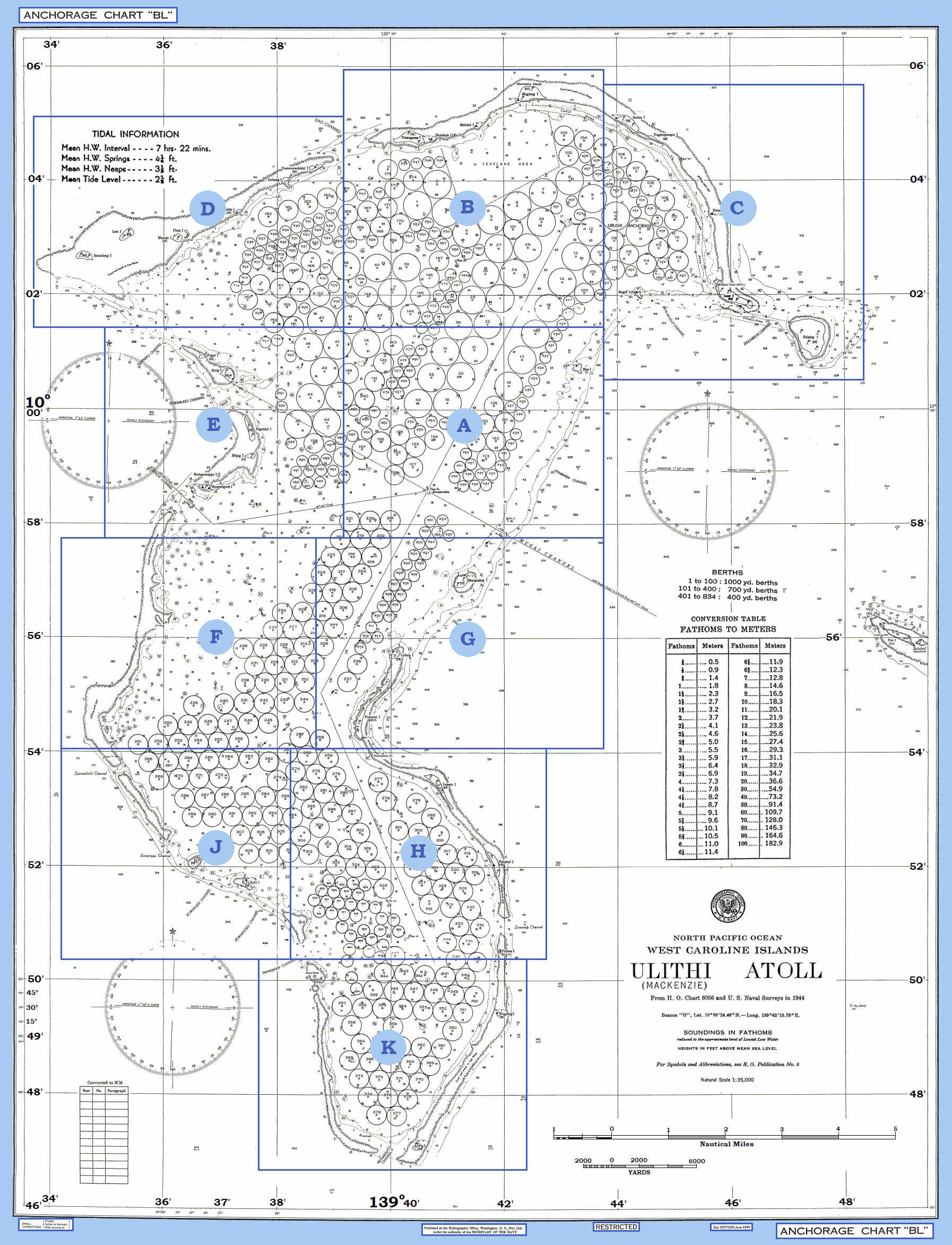
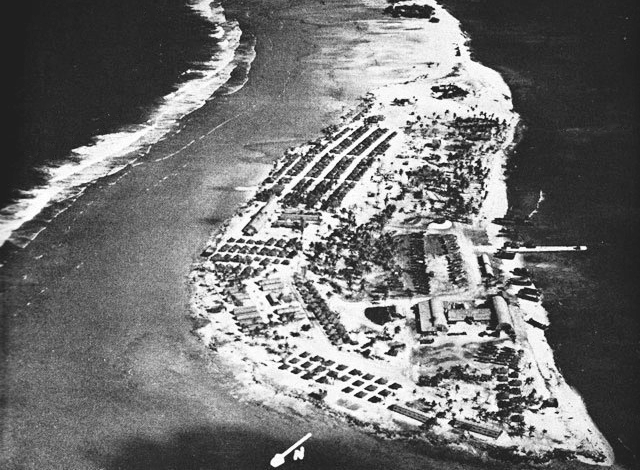
Sorlen Island in Ulithi Atoll featured a 1,600-seat movie theater and a hospital. Water was pumped in from the ocean and distilled on site.
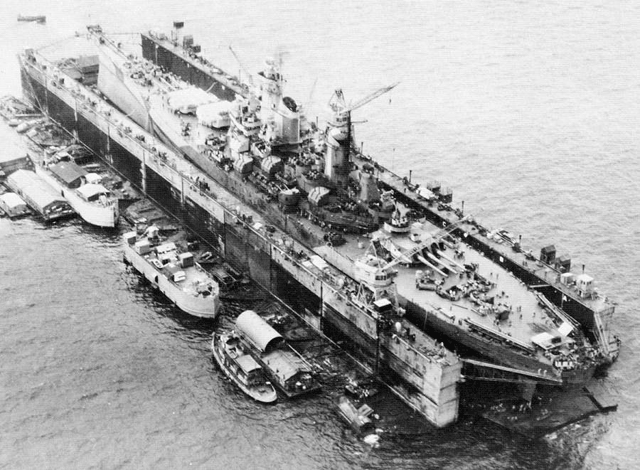
The Navy set up floating dry docks to maintain and repair ships at the atoll. USS Iowa (BB-61), undergoing repairs in 1945.
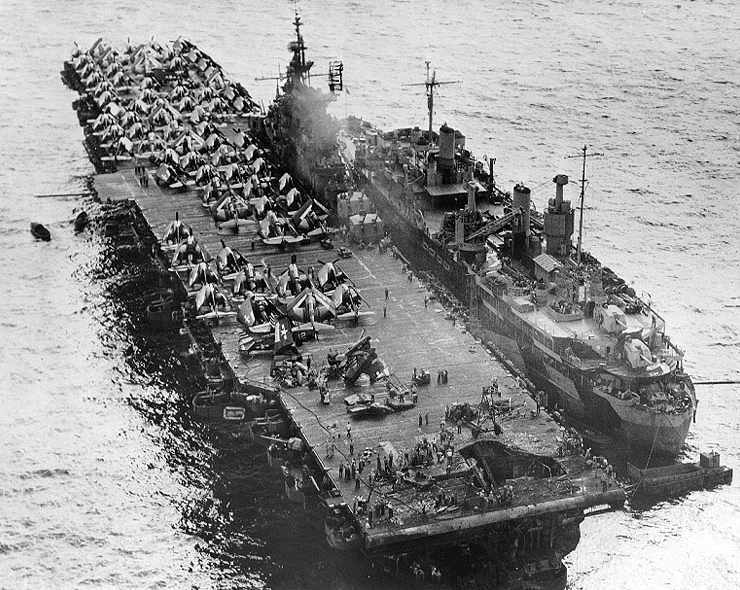
The U.S. Navy aircraft carrier USS Randolph (CV-15) alongside repair ship USS Jason (ARH-1) at Ulithi Atoll, Caroline Islands, 13 March 1945, showing damage to her aft flight deck resulting from a kamikaze hit on 11 March. The photograph was taken from a floatplane from the light cruiser USS Miami (CL-89).
Ulithi Atol served primarily as a mammoth anchoring and refueling point for Navy ships. American forces landed there in September 1944 and began building one of the largest naval bases used during the war. At it's peak, Ulithi Atoll housed 617 ships, had its own 1,200-yard airstrip, and hosted 20,000 troops on its recreation island, Mogmog.
In addition to ship repair, military supply, and safe anchorage, Ulithi housed the tankers that were used to quench the U.S. Pacific Fleet’s enormous thirst for fuel oil. An estimated monthly consumption of over 6 million barrels had to be met by commercial tankers bringing oil from the West Coast to Ulithi. There, a floating storage of more than 100,000 barrels were always maintained. A shuttle service of forty tankers operated between Ulithi and the U.S. Fleet in the western Pacific. In addition, 900,000 barrels of reserve fuel was divided among Saipan, Guam, and Kwajalein, plus a 5 million barrel reserve was held at Pearl Harbor.
Fleet oilers sortied from Ulithi to meet the task forces at sea, refueling the warships a short distance from their combat operational areas. The result was something never seen before: a vast floating service station enabling the entire Pacific fleet to operate indefinitely at unprecedented distances from its mainland bases. Ulithi was as far away from the US Naval base at San Francisco as San Francisco was from London, England. The Japanese had considered that the vastness of the Pacific Ocean would make it very difficult for the US to sustain operations in the western Pacific. With the Ulithi naval base to refit, repair and resupply, many ships were able to deploy and operate in the western Pacific for a year or more without returning to the Naval base at Pearl Harbor.
The Japanese had built an airstrip on Falalop. It was expanded and resurfaced, the runway running the full width of the island. The east end of the strip was extended approximately twenty feet (6.1 metres) past the natural shoreline. A number of small strips for light aircraft were built on several of the smaller islands. The Seabees completed a fleet recreation center at Mog Mog island that could accommodate 8,000 men and 1,000 officers daily. A 1,200-seat theatre, including a 25-by-40-foot (8 by 12 m) stage with a Quonset hut roof was completed in 20 days. At the same time, a 500-seat chapel was built. A number of the larger islands were used both as bases to support naval vessels and facilities within the lagoon.
Within a month of its occupation, a whole floating base operated at Ulithi. Six thousand ship fitters, artificers, welders, carpenters and electricians arrived aboard repair ships, destroyer tenders, and floating dry docks. The USS Ajax had an air-conditioned optical shop, a supply of base metals from which she could make any alloy. Many refrigerator and merchant ships combined to form revolving supply teams. It has been estimated that over half of the ships were not self-propelled but were towed in. They then served as warehouses for a whole system of transports, which unloaded stores for distribution. This kind of chain went all the way back to the United States.
By 13 March 1945, there were 647 ships at anchor at Ulithi, and with the arrival of amphibious forces staging for the invasion of Okinawa, the number of ships at anchor peaked at 722. At its height, Ulithi had a temporary population of a large US city and was the ruler of the Pacific. After Leyte Gulf in the Philippines was secured, the Pacific Fleet moved its forward staging area to Leyte, and Ulithi was was reduced to little more than a tanker depot. In the end, few US civilians ever heard of Ulithi. By the time Naval security cleared release of the name, there were no longer reasons to print stories about it. The war had moved on, but for seven months in late 1944 and early 1945, the large lagoon of the Ulithi atoll was the largest and most active anchorage in the world. Inevitably, just as it had been before the war, Ulithi became a lonely, quiet coral island. Today, it has become a diver's tropical paradise.
The Atoll
A brief overview of Ulithi can be seen in the historical photographs below. Click on the green plus sign to open the cards below. and it will expand. Once a card opens, click on the red minus sign to close the card.
Ulithi Atoll Anchorage
North anchorage and Sorlen IslandUlithi Atoll north anchorage and Sorlen Island, late 1944
USS Shannon (DM-25)
Ulithi Atoll, circa March 1945
The U.S. Navy destroyer minelayer USS Shannon (DM-25) steams past task forces gathering for the Okinawa Operation at Ulithi Atoll, circa March 1945.
The ships in the near background include the light cruisers USS Flint (CL-97), in left center, and USS Miami (CL-89), at right. Three Essex-class aircraft carriers are anchored in the middle distance. USS Enterprise (CV-6) is at the far left.
USS Hancock (CV-19) and USS Wasp (CV-18)
Ulithi Atoll, circa March 1945The U.S. Navy aircraft carriers USS Hancock (CV-19) and USS Wasp (CV-18) at Ulithi anchorage, circa mid-March 1945.
3rd Fleet at Ulithi
Ulithi Atoll, circa December 1945Ships of the 3rd fleet, Ulithi, December, 1944.
3rd Fleet Warships
Ulithi Atoll, circa November 1945U.S. Navy 3rd Fleet warships and auxiliaries anchored at Ulithi Atoll, Caroline Islands, shortly after the Battle of Leyte Gulf, on 6 November 1944. The battleships USS New Jersey (BB-62) and USS Iowa (BB-61) are in the center and at right. Five Essex-class carriers are moored in line in the upper center.
Five Carriers
Ulithi Atoll, 8 December 1944U.S. Third Fleet aircraft carriers at anchor in Ulithi Atoll, 8 December 1944, during a break from operations in the Philippines area. The carriers are (from front to back): USS Wasp (CV-18), USS Yorktown (CV-10), USS Hornet (CV-12), USS Hancock (CV-19) and USS Ticonderoga (CV-14). Wasp, Yorktown and Ticonderoga are all painted in camouflage Measure 33, Design 10a. The other Essex-class carrier painted in sea blue Measure 21 is USS Lexington (CV-16).
USS North Carolina (BB-55)
Ulithi AnchorageUSS North Carolina (BB-55), the lead ship of the North Carolina-class battleships.
USS South Dakota (BB-57)
Ulithi AnchorageUSS South Dakota (BB-57) foreground and USS New Jersey (BB-62) in the background in Ulithi Atoll. 8 Dec.1944.
USS Iowa (BB-61)
Ulithi AnchorageThe U.S. Navy battleship USS Iowa at a forward anchorage as viewed from the aircraft carrier USS Intrepid (CV-11). A cargo ship is moored aft of Iowa, and a converted flush deck destroyer ahead. The photo was probably taken at Majuro or Ulithi Atoll. Note Iowa´s camouflage measure 32, design 1B.
USS Prairie (AD-15)
Ulithi AnchorageThe U.S. Navy destroyer tender USS Prairie (AD-15) at Ulithi Atoll, in 1945. Alongside are three Allen M. Sumner-class destroyers and a Fletcher-class destroyer.
USS Flint (CL-97)
Ulithi Anchorage, March 1945The U.S. Navy Atlanta-class cruiser USS Flint (CL-97), probably at Ulithi Atoll, circa late March 1945, as the U.S. Fifth Fleet was departing for the Okinawa operation. Flint´s camouflage is Measure 33, Design 22d. Note the two Essex-class carriers in the background, the left one probably being USS Bon Homme Richard (CV-31). USS Tennessee (BB-43) is visible in the background (her sister ship California was under repair at Puget Sound at that time).
USS Essex (CV-9)
Ulithi Anchorage, February 1945USS Essex underway from Ulithi CV-9 – 10 Feb 1945
USS Essex (CV-9) Helldiver crew
Utithi AtollOfficers of Bombing Squadron (VB) 4 pictured with an SB2C Helldiver on the flight deck of the carrier Essex (CV 9) at Ulithi Atoll.
Third Fleet
Ulithi Atoll, February, 1945Ulithi Atoll Anchorage, 2 February 1945
Fifth Fleet
Ulithi AtollShips of the 5th fleet at Ulithi
Hellcat aircraft of VMF(N)-541
Falalop Island, Ulithi Atoll, 1945F6F-5N Hellcat aircraft of VMF(N)-541, MAG-45, are on the ground at Falalop Island, Ulithi Atoll 1945
Projection Room for Movies
Ulithi, 1944R4D Aircraft Used as a Projection Room for Movies, Ulithi, 1944
F4U Corsair Tour
Ulithi Atoll airstripNatives get a closeup look of a Corsair at Ulithi Atoll airstrip
Marine Air Wing
Falalop Island, Ulithi Atoll, 1945VMSB-245’s parking area in May 1945. ‘245 arrived at Ulithi in March and flew until the end of the war. It had previously flown a tour from Midway and a second in the Marshall Islands prior to arriving at Ulithi. TBM Avengers, SB2C Helldivers, F6F-5N Hellcats can be seen along with what looks like a USN variant of the Beech 18 and an air rescue float plane.
Marine Air Crew
Falalop Island, Ulithi Atoll, 1945Marine air crew in Willys Jeep with Corsair F4U in the background.
Pilots with Monkey
Falalop Island, Ulithi Atoll, 1945Memo: Before bombing Yap Island, always remember to feed your monkey.
Target Briefing
Falalop Island, Ulithi, May, 1945VMSB-245 crews receive a target briefing prior to a mission against Yap Island on May 1, 1945.
Congratulations
Ulithi, April 1945LT. Col. Hurst and Colonel Robert Mangum chat with and congratulate two young fighter pilots, Lt. Hill and Lt. Hungtington, after they shot down a Japanese plane. April 28, 1945.
F4F Hellcats Parked
Falalop Island, Ulithi Atoll, 1945
F4F Hellcats parked at Ulithi Atoll. The airstrip was constructed on Falalop Islet. Hellcats and other planes were stationed there to protect the island and to bomb targets to the north.
After the United States entered World War II, nose art regulations were relaxed, or in many cases totally ignored. WWII would become the golden age of aircraft artistry. Most (but not all) featured scantily-clad women in suggestive poses.
Ulithi: The Navy's Premier R&R Island in the Central Pacific
View the R&R story of Ulithi as told in these historical photos. Slideshow runs automatically, or click on the right arrow in any photo to manually advance to the next slide.
1945 Military Video
Ulithi Atoll gradually drew down in size as ships moved north but remained in service throughout the end of the war. The video below shows the sheer size of the fleet anchored there. [2 minutes, 11 seconds]
Ulithi Today
Some views of Ulithi today as seen from the air. Slideshow runs automatically, or click on the right arrow in any photo to manually advance to the next slide.
Video of Modern-day Ulithi
Mog Mog island, Ulithi, Micronesia, showcasing life in the remote Pacific. Mog Mog was built up as an American R&R facility as part of the Ulithi naval base during WWII. It is one of the most remote and beautiful islands in the world. Few outsiders have had the chance to see this amazing place. [3 minutes, 49 seconds]
What is an Atoll?
An atoll is a ring-shaped ribbon reef enclosing a lagoon. Atolls begin as an underwater volcanoes called seamounts. Over time and many eruptions, the seamount grows until it rises above the water and becomes an island. Corals grow around the island and, over geologic time, the volcano goes dormant and sinks, but the coral reefs remain and continue to grow faster than the island sinks, eventually creating an island ring made of coral around a central lagoon where the volcano was formerly located. [3 minutes, 56 seconds]
Sources:
Text: The Pacific War, The Strategy, Politics, and Players Who Won the War, by William B. Hopkins. Zenith Press, © 2008
Website: warhistoryonline.com - Top Secret: US Naval Base At Ulithi Was For A Time The World’s Largest Naval Facility, by Jack Knight (Nov. 17, 2017)
Wikipedia: Ulithi

